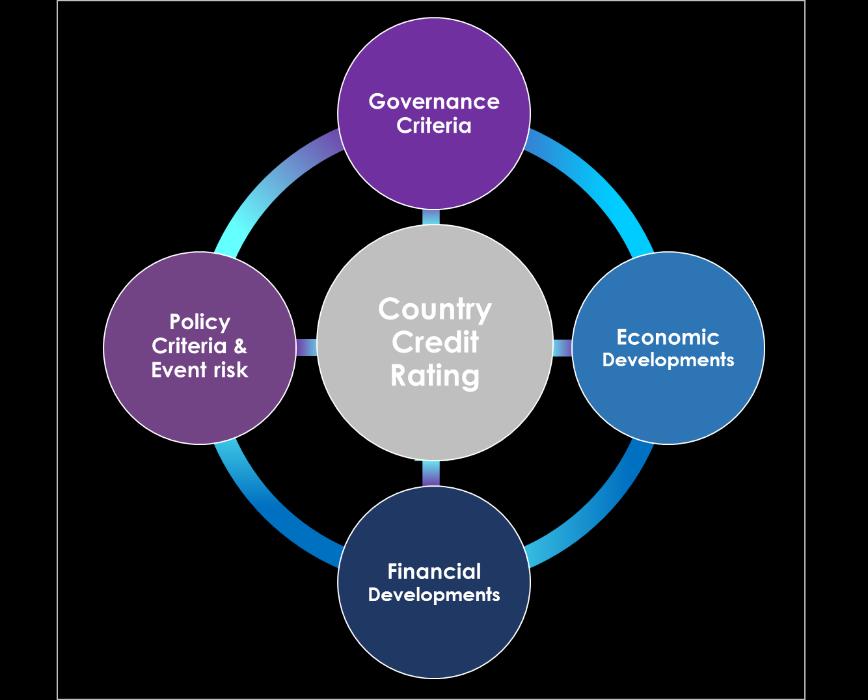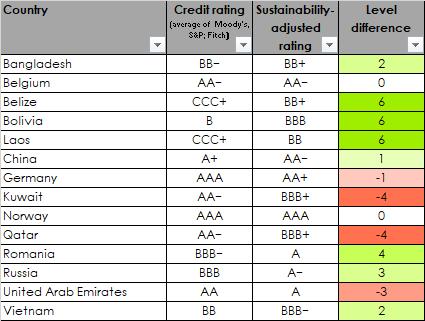
2 minute read
RATINGS DO NOT REFLECT RISKS
1.3 Sustainable Competitiveness Vs. Sovereign Bond Ratings: Sovereign Bond Ratings Do Not Reflect Risks
The sovereign bond rating of a country – commonly referred to as credit rating determines the level of interest a country has to pay for loans and credits on the financial markets. It is therefore a very important parameter for every economy – it defines the level of capital cost for new investments, and the cost of debt. Credit ratings also affect the risks investors are willing to take in overseas investments.
Advertisement
Sovereign risk ratings market is dominated by the “three sisters”: Moody’s, S&P, and Fitch. Sovereign risks are calculated based on a mix of economic, political and financial risks. All of these criteria represent current risks that, like GDP calculations, do not take into account the framework that defines the current situation. They do not consider the wider environment – the education availability, the ability and motivation of the workforce, the health, well-being and the social fabric of a society, the physical environment (natural and manmade) that are the fundament of the current situation. Credit ratings describe symptoms, they do not look at the root causes. It is therefore questionable whether credit ratings truly reflect investor risks of investing in a specific country, in particular for long-term bonds and investments.
Sustainable vs. conventional country credit rating
Comparison of evaluation models:

The Global Competitiveness Model is based on 5 pillars, aiming to cover & evaluate performance of all elements that make economic development (the root). Conventional ratings are based on 4 areas of results. Conventional credit ratings rate the outcome (the end-result); the GSCI the root cause of the outcome.
R a t i n g c o m p a r i s o n s a n d i m p l i c a t i o n s
In order to test the implications of the conventional applied sovereign bond ratings, a virtual sustainability-adjusted credit rating was calculated. The sustainability-adjusted rating is equally based on GSCI ratings and conventional ratings (average of Moody’s, S&P, and Fitch).

Credit ratings vs Sustainable Ratings of selected countries:

Based on sustainable competitiveness, countries dependent on exploitation of natural resources would receive a significant lower credit rating. On the other hand, some developing nations would receive higher ratings (and therefor lower interest rates) based on their development potential.
In the asset management world, it is now standard procedure to integrate “E, S and G” into financial investment risk/opportunity evaluation, while credit ratings do exclude ESG risks - and therefore do not cover all investor risks. Key observations:
Sovereign bond ratings show a high correlation to GDP/capita levels:
Poor countries have to pay higher interest rates than rich countries.
Sovereign bond ratings do not reflect the non-tangible risks and opportunities associated with nation economies
Sustainable adjusted ratings and conventional ratings show significant
differences. Under a sustainability-adjusted credit rating, countries with high reliance on exploitation of natural resources would be rated lower, while poor country with a healthy fundament (biodiversity, education, governance) would receive higher ratings.
It is high time that credit ratings include sustainability in their risk calculations.









